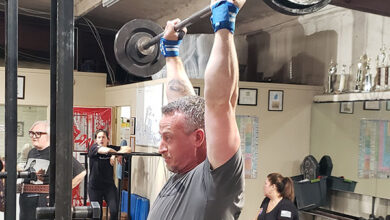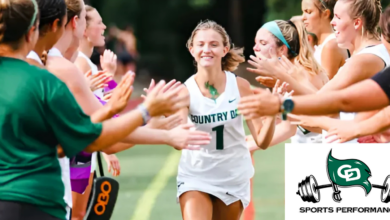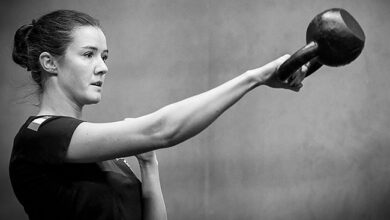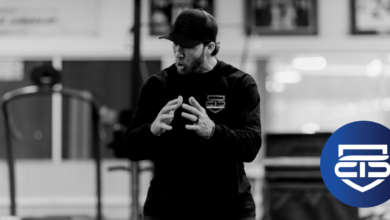Conquering the One-Arm Pushup at Any Age
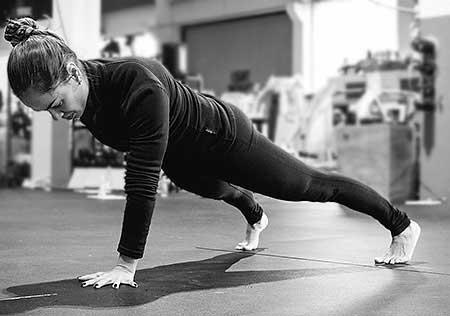
Five years ago, I earned my SFB (StrongFirst Bodyweight) Certification under StrongFirst Certified Master Instructor Karen Smith. The SFB StrongFirst Bodyweight Instructor Certification prepares you to teach bodyweight exercises safely and effectively, adhering to strict standards. To pass the strength test, women over 50 must perform a one-arm pushup (OAPU) from an elevation of 6-8 inches. Men over 50 and women under 50 must perform a one-arm pushup.

Men under 50 must execute the one-arm/one-leg pushup (OAOLPU) balancing on one hand and one foot. Regardless of your category, the challenge is not easy. I found it to be a fascinating experience, and it sparked a question: Which exercise provides the greatest overall benefit?
Often the answer is the kettlebell get-up because it engages different muscle groups while controlling an off-center load through many different angles. There is also a compelling argument for the barbell deadlift, which utilizes the whole body and helps maintain and improve bone density. Personally, I would argue for the OAOLPU.
Looking back at my training calendar, one exercise seems to show up every week going back five years. That is the band-assisted OAOLPU. Training this movement, not only helps achieve an unassisted OAPU but also improves barbell lifts like the deadlift and squat, which is why I practice the OAOLPU weekly. I’ve also discovered an interesting modification that I’ll share later in this article.
It’s Never Too Late to Start
I obtained my StrongFirst Elite certification after turning 66. Better late than never, I say. At 60, after spending 40 years in a sedentary job, I discovered a passion for all things StrongFirst. Until then, I got my exercise jogging, coaching, officiating youth sports, and would occasionally go to the gym to use the machines.
About eight years ago a local gym advertised a kettlebell class led by a StrongFirst certified instructor. I gave it a try—talk about life-changing. Everything I thought I knew about getting a workout became obsolete, including the term “workout.”
Learn from the Best
The trainer I happened upon is StrongFirst Certified Senior Instructor Yoana Teran. Instead of keeping me at the level of student, she trained me to become an instructor. And in the process, I learned that a StrongFirst instructor always remains a student.
When working toward the SFB standards, which I passed at the age of 63, Yoana explained how the irradiation needed for a successful OAPU is the foundation for all exercises StrongFirst teaches. In other words, the active muscles in your arm and chest benefit from the tension created in muscles throughout your entire body.
To perform any pushup effectively, you must stay tight—tension generates power and prevents energy leakage. My training greatly benefited from the use of resistance bands supporting the working shoulder. Resistance bands help you maintain proper form while adjusting reps per set, and they offer versatility with different levels of resistance. This exercise is also ideal for the grease-the-groove approach, allowing for frequent practice throughout the day. The more I trained the assisted OAPU, the lighter kettlebells felt during my training.
Here is a sample of the guidance Yoana gave me after I learned how to do a hard-style plank and pushup.
- The fingers should be planted firmly as if glued to the deck.
- The working hand should be under the shoulder.
- The feet should be dorsiflexed and all toes grounded.
- Concentrate on using your armpit as the source of your power by externally rotating your working arm.
During the process I would get her astute observations and suggestions. I sent her videos, and she would send back a frame with her insightful comments.
Here are some of those:

My fingers were not grounded, and I had power leakage in my non-working arm.

My non-weight bearing foot did not stay connected.

My hand was too far forward.
My Favorite OAOLPU Variation
An interesting variation I’ve practiced over the past three years works well for those who prefer the OAPU with the nonworking hand resting by the thigh. I hold a small dumbbell in my nonworking hand, starting with 6 pounds and now using 10 or 15 pounds. At first, it may seem like the added weight offsets the assistance from the band, but in reality, it helps create useful tension—mimicking the engagement of an unassisted OAOLPU while the band supports the working shoulder. This way you can continuously train the OAOLPU with less strain on your shoulder due to the band yet maintain more tension throughout your body. You can use this method for elevated assisted OAPUs as well.
I use the added weight for one-arm/one-leg planks, as well as the assisted OAOLPU.
When performing this plank variation—which I hold for up to 3 minutes, switching hands every 15 to 20 seconds—you’ll improve your breathing. You’ll specifically learn how to “breath behind the shield” using short, diaphragmatic breaths while maintaining trunk tension for strength and stability. Learning to breathe behind the shield enhances performance in other exercises, such as the barbell deadlift. I believe performing OAPU progressions significantly benefited me when I began barbell training.
Working towards an Unassisted OAOLPU
I was well beyond my prime when I became interested in kettlebells and bodyweight training, and I hope to encourage others to explore the OAPU earlier than I did. Although I was able to perform an unassisted OAPU within about a year of working with Yoana, I am still learning the skill.
Doing the exercise while purposefully keeping the other foot off the ground took another five years to achieve. Finally, just a few months before my 69th birthday, I was able to squeeze out an unassisted OAOLPU. I have performed it a few times since then, yet I have a way to go before I can do it whenever I want. Did I really need to eke out an unassisted OAOLPU? I imagine it’s like getting your first pullup or snatching a kettlebell 100 times in five minutes—it gives you a major psychological boost.
The videos below show my initial miss on the right side, followed by a barely successful attempt on the left side.
I had hoped for success with my right arm, but I fell short. Then I tried with my left and was surprised by the result.
This is what I discovered. The strength of your legs and hip flexors, which can be stronger on one side than the other, may have more impact on the movement than arm strength. I have always had a stronger right leg. For instance, if I were to punt a football, I can only imagine using my right leg. When performing the OAOLPU, I found that I had significantly more success when using my left arm in combination with my stronger right leg.
Inspiration from the StrongFirst Community
I have been inspired by stories of people becoming strength-oriented while in their sixties and beyond including articles by John Sullivan, Jim Hatcher, and Pope Moseley on this site. Inspiration might be the wrong descriptive term. Perhaps what I have gained from their stories is a change in expectations. Geriatric athletes should never think they are too old to improve their strength or mobility. My motivation also comes from the younger men and women who have crushed their strength goals. I try to mimic their dedication to proper technique while using lighter weights. Then I enjoy where it takes me.
Gear up Strong!
If you know, you know. And when we see the shield… we know.

Get your StrongFirst gear now!

